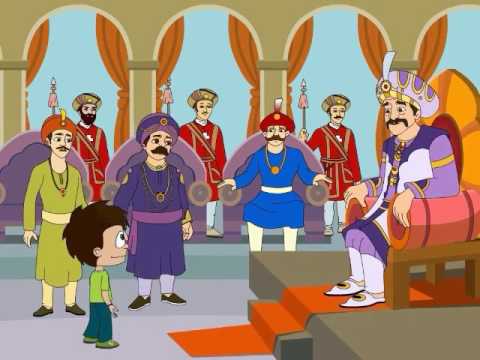Manashbari system in India was started by Akbar

Other Important Facts –
- What were the major events of Akbar’s period?
- Mughal period revenue theory
- 16 What were Mahajanapadas
Manashbari system-
Manashbari system was the basic idea of Mughal military system. Which was based on the decimal system of Mongols.
Inspiration of the Manashbari system was started by Khalifa Abbaside and received from the system adopted by changez Khan and Timur.
In the 19th year of the reign of Akbar (1575 AD), there is a signal to be given for the first time.
Manasub was not a title or a title, but it used to inspire the status of a rich. Thus, the meaning of Manasab was the rank or category.
Akbar divided his entire mansab in the sum of the calculation of Allah’s word, i.e. 1 + 30 + 30 + 5 = 66 categories, but Abul Fazl mentioned only 33 categories.
In the last years of his life, Akbar started a duplicate tradition called Jat and Rider in the Manashbari system.
Under the word caste, there was an understanding of the position of the person’s salary and position, whereas the word of the rider was realized in the number of intruder squads.
At the time of Akbar, the youngest man was 10 and the highest was 10,000. That was 12,000 in time.
Manasab over 5,000 was safe for the princes and the people of the dynasty. Later, Akbar gave Mirza Aziz Koka and Mansingh seven years’ worth of two thousand.
During the period of Jahangir and Shahjahan, the princes of the 8,000 and the princes were given 40,000 mansabs. The number of which reached 50,000 in the North-Mughal period.
Manasbadharas were divided into the following categories-
- From 10 to 500 below-Manashbadar
- 500 but less than 2500-ameer
- 2500 jaat and more – Amir-e-Ummdah
The highest military title – khaane-jama. After this – Khan-e-Khana.But these two posts were usually given to one person only.
In the Mughal period, he was employed in the government departments, but was not rabidly called rosydar, he was given daily wages.
Manasbadars got the salary in the form of cash and manor. But he had the right to only get revenue from the manor. It did not have administrative authority in the land.
The determination of the salary of Manashbars was generally not less than 4 months and ten months more.
Initially, Rs. 240 for the Manasbadar Annual rider was paid. But in the time of Jahangir, this amount was reduced to Rs. 200. Had been made annually.
Manasbadar’s salary was fixed in rupees but his payment was done in the form of manor.
There was a change in the reign of Shah Jahan that the proportion of the number of specified candidates in the posts of the Manasbadar came down drastically.
The mansabs were not genetic. After the death or demise of a gentleman, it was automatically eliminated.
On the basis of the post of the rider, the Manasbadhar of 5,000 and below has been divided into three categories-
- First-class manpower was given the rank of savar(number of intruded Mounted) equal to the jaat position. Like -5,000 jaat / 5,000 savars.
- The second class of the manasabdars – used to keep few or half horsemen soldiers from their jaat position. Like -5000jaat / 3,000 horsemen
- Third-class Manasbadar- less than half of his caste status used to be horse soldiers. Like -5,000 jaat / 2000 Mounted.
Shahjahan arranged for the monthly ratios i.e. half-year and quarterly basis for reducing the interval (real income) and deposit (fixed lean) in the last years of its regime.
Shah Jahan started the arrangement of Mahan-Jagirs (Shishmaah Jagir and boundary walls, etc.) on the basis of actual realization of the jagirs. The realization of the revenue from which the 50% of the total amount of the collection was the Shishmaha manor, and from which one-fourth (i.e. 25 percent ) Was said to be the limitless manor.
Akbar operated the practice of Tasheehah (face) in 18th (AD 1574 AD) of his rule. Although this practice was prevalent in the time of Alauddin, Balban and Sher Shah before that. But at that time only one stain was placed used to go.
Akbar gave a new form of stain and two-marks (marks) were started in his time. Akbar had opened a separate department called Dag-e-Muhali, for it was a royal stain and the other was a stain of Manashbadar.
Jahangir used to practice such practice, wherein Manasbadars were asked to keep more army, without increasing the caste status. This practice was called duplicate and ash-aspa.
- In Dushah-Aspa, the Manashbadars would have to keep twice as fast as their savar.
- In the Sih-Aspa, the Manashbadars used to keep three times their riding posts.
- In Yak-Aspa, the Manashbadar had to keep only one horse according to his rider post.
In the time of Akbar, it was the rule that the post of a rider can not be more than his caste position.
In the time of Shah Jahan, the Manasbadars who had got the place of honor at the place of their appointment, they had 1/3 horse soldiers of their riders, who had got manor in the province outside the recruitment place, 1/4 and outside India or north-west Manashbad of the border province had to hold 1/5 horse soldiers.
In the time of Aurangzeb, when a manassar was appointed on some important post (such as a faujdar or fortress) or when he went on an important mission, another medium of extra growth was removed in his rider post. Which was called Mashrut.
In the time of Aurangzeb, the number of times of Manashbadar increased so much that there was no hedge to give them. This situation was called unreasonable.
Reference : https://www.indiaolddays.com/





